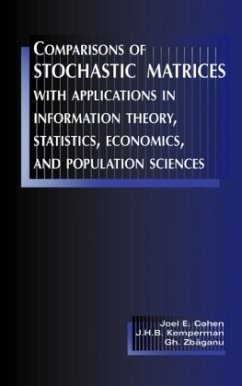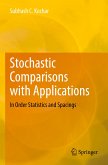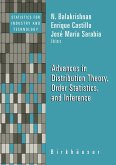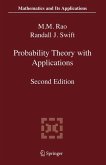The focus of this monograph is on generalizing the notion of variation in a set of numbers to variation in a set of probability distributions. The authors collect some known ways of comparing stochastic matrices in the context of information theory, statistics, economics, and population sciences. They then generalize these comparisons, introduce new comparisons, and establish the relations of implication or equivalence among sixteen of these comparisons. Some of the possible implications among these comparisons remain open questions. The results in this book establish a new field of investigation for both mathematicians and scientific users interested in the variations among multiple probability distributions.
The work is divided into two parts. The first deals with finite stochastic matrices, which may be interpreted as collections of discrete probability distributions. The first part is presented in a fairly elementary mathematical setting. The introduction provides sketches of applications of concepts and methods to discrete memory-less channels in information theory, to the design and comparison of experiments in statistics, to the measurement of inequality in economics, and to various analytical problems in population genetics, ecology, and demography. Part two is more general and entails more difficult analysis involving Markov kernels. Here, many results of the first part are placed in a more general setting, as required in more sophisticated applications.
A great strength of this text is the resulting connections among ideas from diverse fields: mathematics, statistics, economics, and population biology. In providing this array of new tools and concepts, the work will appeal to the practitioner. At the same time, it will serve as an excellent resource for self-study of for a graduate seminar course, as well as a stimulus to further research.
Hinweis: Dieser Artikel kann nur an eine deutsche Lieferadresse ausgeliefert werden.
The work is divided into two parts. The first deals with finite stochastic matrices, which may be interpreted as collections of discrete probability distributions. The first part is presented in a fairly elementary mathematical setting. The introduction provides sketches of applications of concepts and methods to discrete memory-less channels in information theory, to the design and comparison of experiments in statistics, to the measurement of inequality in economics, and to various analytical problems in population genetics, ecology, and demography. Part two is more general and entails more difficult analysis involving Markov kernels. Here, many results of the first part are placed in a more general setting, as required in more sophisticated applications.
A great strength of this text is the resulting connections among ideas from diverse fields: mathematics, statistics, economics, and population biology. In providing this array of new tools and concepts, the work will appeal to the practitioner. At the same time, it will serve as an excellent resource for self-study of for a graduate seminar course, as well as a stimulus to further research.
Hinweis: Dieser Artikel kann nur an eine deutsche Lieferadresse ausgeliefert werden.
"This book gives a mathematical treatment of a variety of methods for quantifying divergence or similarity between sets of proability distributions on a common space. Classical metrics, such as total variation and Kullback--Liebler divergence, are generalized. Such problems arise in statistics, economics and information theory. The book gives Brief but useful treatments of these and other applications with abundant references... well written with pointers to history and other methods of proof." --Journal of the American Statistical Assoc. "The book is compact and is dense with information. There is considerable motivation in the introduction... Contain[s] much material for the specialist." --Zentralblatt Math








